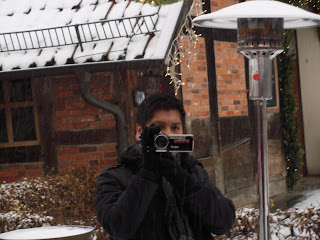 The mother of four Sabine Hediger travels shortly after Christmas in Haiti to the SRC in the cholera tent hospital in Grand-Goâve patients maintain. For the nurse and midwife, it is her first overseas deployment.
The mother of four Sabine Hediger travels shortly after Christmas in Haiti to the SRC in the cholera tent hospital in Grand-Goâve patients maintain. For the nurse and midwife, it is her first overseas deployment. I'm glad I can spend Christmas at home yet. For the children there is something unusual that I go away to help others. Our youngest is only six, the oldest 13 years old. For the period of my absence I have prepared as in Advent calendars. Every day the kids can unwrap a small packet. When all are open, I'll be back. Thus, the duration of my absence, for it is something tangible.
this I can get away, it takes a lot of organization. Besides my husband also helps my sister, my girlfriend and people from our neighborhood. Fortunately, there are in our municipality has recently become a non-school care program. So the children are well supported during the day.
I am very excited about what awaits me in Haiti. Even as a teenager I had a desire to work abroad again. But first came the study, then the foundation of the family.
When I during my involvement with the Red Cross service a few Years, a presentation on the emergency response team of the Red Cross heard, I knew: This is the opportunity. The missions take three to four weeks, about as long as I can leave my family alone. A year ago I applied for admission to the emergency pool of the SRC. Last fall I attended a ten-day course where we were prepared for use in disaster areas.
That I will not be used as a midwife, but as a nurse in Haiti is no problem for me. I have worked before training as a midwife for several years as a nurse. I am glad that the job in the cholera hospital is clear. The point is, by fluid administration and care of patients to save lives. prepares
worries me more the security situation. I will certainly do everything possible to avoid unnecessary risks. I am also guilty of my family.
>> Donations to the fight against cholera in Haiti




























